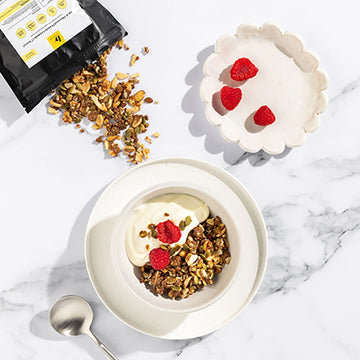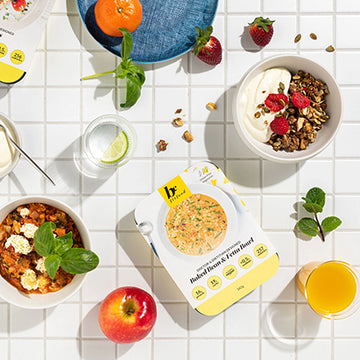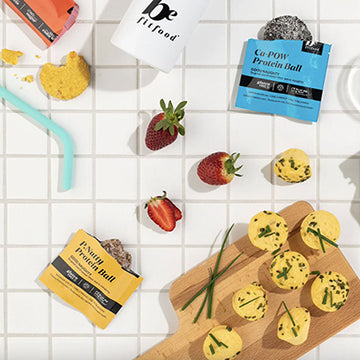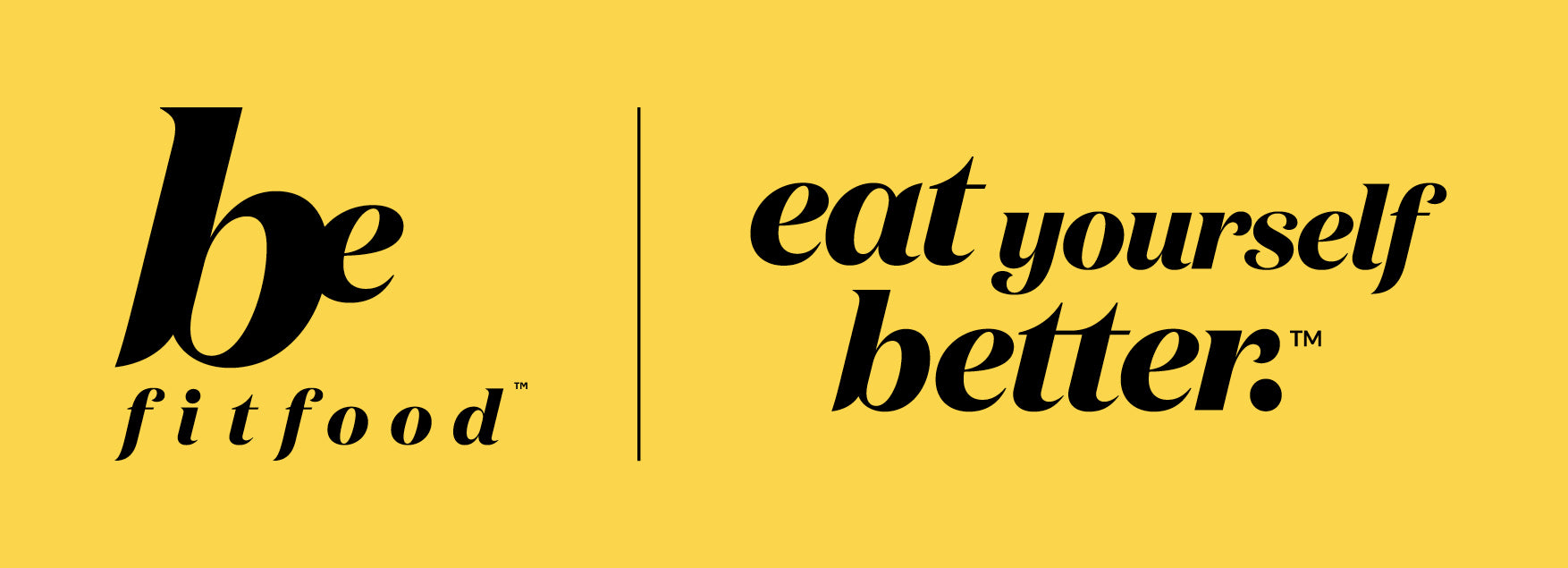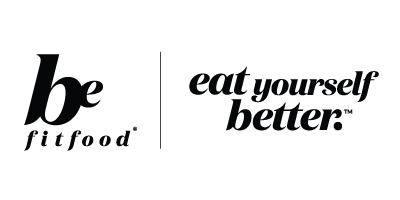Introduction
The weeks and months after giving birth can feel overwhelming. Your body is healing from pregnancy and labour, your hormones are shifting and you’re caring for a newborn on very little sleep. The postpartum period includes the six weeks immediately following birth, but can extend for up to 12 months while your body recalibrates www1.racgp.org.au. During this time women experience physical, emotional and social adjustments as they learn to care for their baby and themselves www1.racgp.org.au. Nutrition plays an integral role in this recovery. Eating well helps tissue repair, replenishes nutrients lost during pregnancy and birth, sustains energy through sleepless nights and supports your mood and mental health. It’s completely normal not to bounce back straight away; focusing on nourishment and gradual progress will support both you and your baby. In the sections below you’ll learn why nutrition matters, how to plan and prepare meals as a new mum, simple breastfeeding nutrition tips, a five‑day sample meal plan and guidance on gently losing “baby weight” when you’re ready. There’s also an FAQ section to answer common concerns.
Why Nutrition Matters After Baby
After birth your body has high metabolic demands as it heals and, if you’re breastfeeding, produces milk www1.racgp.org.au. Eating a wide variety of unprocessed, nutritious foods gives you the building blocks needed for tissue repair, replenishment of nutrient stores and sustained energy www1.racgp.org.au. Below are some key nutrients and why they are vital during the postpartum period, with examples of foods to include. Many of the recommended foods also appear later in the sample meal plan.
| Nutrient & Why It’s Needed | Example Food Sources |
|---|---|
| Protein – supports healing and muscle repair, helps maintain your immune system and keeps you satiated. Breastfeeding mums need extra protein www1.racgp.org.au. | Lean meats, fish, eggs, legumes (beans, lentils), tofu and dairy; HQ Health notes that high‑quality meat or plant proteins are essential for postpartum healing hqhealth.com.au. |
| Iron – replenishes iron lost through childbirth and prevents fatigue. | Lean red meat, black beans, lentils, dark leafy greens and beetroot hqhealth.com.au. |
| Calcium & Vitamin D – support bone health for you and bone development for baby through breastmilk. The Australian RDI for breastfeeding women aged 19–50 is 1,000 mg of calcium and 5 µg of vitamin D per day www1.racgp.org.au. | Dairy products (milk, yoghurt, cheese), fortified plant milks, leafy greens, canned salmon with bones; adequate vitamin D can also come from safe sun exposure. |
| Iodine & Vitamin B12 – essential for your thyroid and nervous system and to support infant growth. Breastfeeding women need around 270 µg of iodine and 2.8 µg of vitamin B12 daily www1.racgp.org.au. | Seafood, seaweed, dairy, eggs, iodised salt, beef and fortified cereals. Vegetarians may need a supplement after consulting a health professional. |
| Omega‑3 Fatty Acids – may support mood and baby’s brain development. | Oily fish (salmon, sardines, mackerel), flaxseeds, chia seeds, walnuts and seaweed hqhealth.com.au. |
| Fibre – aids digestion and can help prevent the constipation many women experience postpartum. | Wholegrains (oats, brown rice, quinoa), beans, lentils, fruits and vegetables. HQ Health recommends plenty of fruit and veg to aid digestion hqhealth.com.au. |
| Fluids – essential for hydration and milk production. Breastfeeding women need about 2.6 litres of fluid per day www1.racgp.org.au. HQ Health advises drinking room‑temperature water throughout the day and suggests up to 12 glasses a day to prevent constipation hqhealth.com.au. | Water, herbal teas and soups; foods with high water content such as fruit and broth. |
Beyond these nutrients, anti‑inflammatory spices such as ginger, cinnamon and turmeric may ease discomfort and help the uterus contract hqhealth.com.au. Chinese dates, goji berries and lotus seeds are traditional foods used to support mood hqhealth.com.au. Remember that no single food is a magic cure; focus on variety and balance.
Emotional wellbeing and nutrition
Postpartum women can be vulnerable to mood swings and low mood. Omega‑3 fatty acids, selenium, B‑vitamins and iron all contribute to neurotransmitter production and may help regulate mood hqhealth.com.au. Enjoying a wide range of foods ensures you get a breadth of nutrients; staying hydrated and eating regularly also steadies blood sugar and supports mental health.
Breastfeeding Nutrition 101
Breastfeeding places extra energy and nutrient demands on your body. Breastfeeding mothers need approximately 340–400 extra calories (1 400–1 700 kJ) per day compared with their pre‑pregnancy intake cdc.gov. The Australian guidelines summarised in the RACGP article translate this to around 2 000 kJ per day above non‑breastfeeding needs and stress the importance of additional iodine and protein www1.racgp.org.au. The U.S. CDC notes that total energy intake for a breastfeeding woman generally falls between 2 000 and 2 800 calories per day cdc.gov, depending on age, activity level and whether feeding is exclusive or mixed.
Key considerations
● Extra protein and micronutrients: Women who are exclusively breastfeeding should aim for about 67 grams of protein per day (for those aged 19–50) www1.racgp.org.au. Continue to eat plenty of calcium, vitamin D and iodine‑rich foods; iodine needs rise to 270 µg/day www1.racgp.org.au.
● Hydration: Your body draws water into breastmilk, so staying hydrated is vital. The adequate intake for breastfeeding women aged 19–50 is 2.6 litres of fluids daily www1.racgp.org.au. HQ Health advises drinking room‑temperature water throughout the day and suggests up to 12 glasses per day for regular bowel movements hqhealth.com.au. Keep a water bottle within reach while feeding; soups and herbal teas also count.
● Galactagogues: Certain foods have traditionally been thought to support milk supply. HQ Health highlights barley, millet, asparagus, brown rice, fenugreek, fennel seed and oats as foods that may help boost lactation hqhealth.com.au. Brewer’s yeast, flaxseed and almonds are popular in lactation cookies, though evidence is mixed. Ultimately, adequate calories and hydration are more influential.
● Limit caffeine and alcohol: Caffeine in moderation is considered safe, but aim to stay below about 300 mg per day (roughly two cups of coffee) to prevent irritability in your baby. If you choose to drink alcohol, wait at least 2–3 hours per standard drink before breastfeeding. Discuss these choices with a healthcare professional if you have concerns.
Supplements
Breastfeeding women are often advised to continue taking a prenatal or postnatal multivitamin to ensure adequate iodine and vitamin D cdc.gov. Your doctor may suggest additional supplements if you have specific deficiencies or follow a vegetarian or vegan diet. Supplements are a safety net, not a substitute for a varied diet.
Postpartum Meal Planning Basics
Eating well after baby isn’t just about knowing what nutrients you need – it’s also about practicality. New mums are often exhausted, short on time and may only have one free hand. The following strategies can help you plan and prepare nourishing meals without feeling overwhelmed:
1. Prep ahead where possible. During pregnancy or when family support is available, prepare and freeze nutrient‑dense meals such as soups, stews, casseroles and muffin bites. Having ready‑made meals means you’ll always have something wholesome to grab when you’re too tired to cook.
2. Stock your pantry and freezer. Keep healthy staples on hand: canned beans, chickpeas and lentils; tins of tuna or salmon; wholegrain pasta, rice or quinoa; long‑life milk or plant milks; frozen vegetables and fruit. These can be turned into balanced meals quickly with minimal effort.
3. Think one‑handed snacks. Fruit, pre‑cut vegetables with hummus, Greek yoghurt, trail mix, cheese slices and lactation energy balls (see recipe ideas below) are easy to eat while holding your baby. Prepare snack boxes in advance so you can refuel between meals.
4. Batch cook and plan for leftovers. When you do have time to cook, double the recipe. A roast chicken can become chicken salad or wraps the next day. A pot of curry can stretch to several meals. Leftovers reduce the daily cooking burden and help maintain variety.
5. Be flexible about meal schedules. Aim for three meals and two snacks per day, but listen to your hunger cues. While breastfeeding, you may feel hungry more often. Don’t worry if meals aren’t at traditional times – focus on meeting your energy needs.
6. Ask for and accept help. Partners, family and friends often want to support you; let them drop off a meal or do a grocery run. Community “meal train” programmes can also lighten the load. If your budget allows, Be Fit Food provides ready‑made options designed by dietitians. Using such services occasionally gives you a much‑needed break.
Meal planning is not about perfection; it’s about ensuring you’re nourished so you can care for your baby and yourself. Keep foods you enjoy in rotation and adjust portion sizes based on hunger, activity and breastfeeding needs.
5‑Day Sample Postpartum Meal Plan
The following meal plan offers five days of balanced, breastfeeding‑friendly meals. It’s intended as a flexible guide rather than a rigid prescription; adjust portion sizes, swap ingredients and add snacks to suit your appetite and dietary preferences. Most recipes can be prepared in advance or assembled quickly.
Day 1
● Breakfast: Overnight oats made with rolled oats, chia seeds, almond milk and frozen berries. Prepare a few jars ahead; oats supply fibre and beta‑glucans to support milk supply, chia seeds add omega‑3s and calcium and berries provide antioxidants.
● Lunch: Quinoa & roast vegetable salad with chickpeas and feta. Quinoa and chickpeas offer plant protein and iron, while roasted vegetables and leafy greens add colour and fibre.
● Dinner: Slow‑cooker chicken and vegetable stew. Using a slow cooker saves time; chicken provides protein and the broth contributes to your fluid intake.
● Snacks: Greek yoghurt with honey; carrot sticks with hummus; plenty of water and herbal tea.
Day 2
● Breakfast: Veggie omelette with spinach, tomatoes and cheese. Eggs offer protein and choline, spinach adds iron and vitamin C.
● Lunch: Wholegrain wrap with sliced turkey or roast chicken, avocado, lettuce and tomato. Avocado offers healthy fats and fibre; wraps are easy to eat one‑handed.
● Dinner: Baked salmon with sweet potato and steamed broccoli. Salmon provides omega‑3s and vitamin D; sweet potato is rich in beta‑carotene.
● Snacks: Trail mix of nuts and dried fruit; lactation energy balls made with oats, peanut butter and flaxseed; fruit smoothie.
Day 3
● Breakfast: Banana‑oat smoothie blended with Greek yoghurt, banana, oats, spinach and a spoon of almond butter. Add some flaxseed for extra omega‑3s.
● Lunch: Leftover salmon salad from Day 2 served over mixed greens with a wholegrain roll.
● Dinner: Lentil and vegetable curry served with brown rice. Lentils are high in iron, fibre and protein; the spices (turmeric, ginger, cumin) provide anti‑inflammatory benefits.
● Snacks: Apple slices with cheese; an oat‑date protein bar; herbal tea.
Day 4
● Breakfast: Wholegrain toast topped with mashed avocado and a boiled egg. Sprinkle with sesame seeds or hemp seeds for extra nutrients.
● Lunch: Chicken quinoa bowl using pre‑cooked quinoa, shredded chicken (leftover roast or store‑bought), roasted veggies and a tahini‑yoghurt dressing.
● Dinner: Beef and vegetable stir‑fry with ginger and garlic served over rice or soba noodles. Make extra for tomorrow’s lunch.
● Snacks: Green smoothie (spinach, banana, almond butter, Greek yoghurt); handful of almonds; grapes.
Day 5
● Breakfast: Egg muffins made with whisked eggs, chopped vegetables and cheese baked in a muffin tin. They can be made ahead and eaten cold or reheated.
● Lunch: Pumpkin and lentil soup with a slice of wholegrain bread. Soups are hydrating and easy to digest.
● Dinner: Homemade lasagne with lean beef or lentils, ricotta and plenty of vegetables, served with a green salad. If time is tight, rely on a trusted meal delivery or accept a dish from family – there is no shame in asking for help.
● Snacks: Cottage cheese with pineapple; oatmeal lactation cookies; your favourite fruit.
This meal plan emphasises variety, colour and balance. Modify it to include culturally traditional foods that comfort you; for example, HQ Health recommends sweet rice with longan fruit or red adzuki beans for their digestive and mood benefits hqhealth.com.au.
Healthy Recipes & Meal Ideas
Looking for more inspiration? Here are a few nourishing recipes that can be made ahead or quickly assembled. For detailed methods, search reputable recipe sites or use your own favourites.
● Hearty beef and lentil stew: Packed with iron and protein, this stew freezes well and can be reheated for several meals. Use lean beef, red lentils, carrots, celery and tomatoes with herbs.
● Vegetarian “boost your milk” cookies: Bake cookies with oats, flaxseed, brewer’s yeast, almond meal and dark chocolate chips. They’re convenient, sweet and supply fibre and minerals that support milk productionhqhealth.com.au.
● Green smoothie for new mums: Blend baby spinach, banana, frozen mango and a spoon of peanut or almond butter with milk or yoghurt. It’s quick, hydrating and provides vitamins A, C and K along with healthy fats.
● Egg muffins: Whisk eggs with diced vegetables (capsicum, spinach, mushrooms) and grated cheese. Pour into muffin tins and bake. They’re portable and protein‑dense.
● Slow‑cooker bone broth: Simmer bones with carrots, onions, celery, garlic and bay leaves for several hours. Bone broth is rich in collagen and minerals that support joint and gut health; it also counts towards your fluid intake.
Feel free to link to trusted recipe resources on your website or a dietitian‑approved blog. Having a repertoire of simple recipes helps maintain variety without adding stress.
Safely Losing the Baby Weight
It’s common to think about losing “baby weight,” but weight loss should never take precedence over healing and nourishing yourself. The focus for at least the first six weeks postpartum should be on recovery and meeting your nutrient and energy needs llli.org. Several factors influence postpartum weight retention – irregular and inadequate sleep, disrupted meal routines, lack of access to nutritious foods, physical inactivity and psychosocial stress www1.racgp.org.au. Below are evidence‑based guidelines for gentle, healthy weight loss once you’re ready.
1. Wait six to eight weeks before trying to lose weight. La Leche League International recommends waiting at least six to eight weeks postpartum before actively trying to lose weightllli.org. Your body needs this time to recover from birth and establish milk supply.
2. Prioritise breastfeeding and adequate calories. Producing milk burns around 500–700 calories (2 100–2 900 kJ) per day llli.org. To maintain milk supply, La Leche League advises eating at least 1 800 calories per day (about 7 500 kJ) while trying to lose weight llli.org. Severely restricting calories or following fad diets can compromise energy levels and milk production llli.org.
3. Aim for slow, steady weight loss. A reduction of about 0.5 kg per week or 2 kg per month is generally considered safe and sustainable llli.org. Rapid weight loss can release stored toxins into breastmilk and impact mood and energy.
4. Choose nutrient‑dense foods and avoid strict diets. Focus on fruits, vegetables, wholegrains, lean proteins and healthy fats llli.org. Low‑carb or keto diets aren’t recommended during breastfeeding because severe macronutrient restrictions can lead to nutrient deficiencies or even rare complications like lactational ketoacidosis llli.org.
5. Incorporate gentle exercise. Combining physical activity with dietary changes is more effective than either alone llli.org. Begin with gentle movement such as walking with the pram, postnatal yoga or pelvic floor exercises once cleared by your doctor. Gradually build up intensity after 6–12 weeks llli.org.
6. Stay hydrated and rest when possible. Drinking enough water supports metabolism and milk production www1.racgp.org.au. Sleep deprivation can affect hunger hormones and hinder weight loss, so nap when you can and ask family to watch the baby so you can rest.
7. Seek professional support if needed. Working with a dietitian, GP or lactation consultant can provide tailored advice. Evidence suggests postpartum interventions that include nutrition education, structured physical activity and weight monitoring help women achieve healthy weight www1.racgp.org.au.
8. Be kind to yourself. On average women retain 2–3 kg per pregnancy www1.racgp.org.au, and one in five women retain more than 4 kg at 12 months postpartum www1.racgp.org.au. Supporting a return to pre‑pregnancy weight by six to 12 months postpartum is associated with better long‑term outcomes www1.racgp.org.au, but everyone’s journey is different. Focus on how you feel rather than a number on the scale.
Remember, weight loss is just one aspect of postpartum wellbeing. Nourishing yourself adequately, bonding with your baby and adjusting to motherhood are equally – if not more – important. There’s no rush; it took nine months to grow your baby, so give yourself plenty of time to recover.
Frequently Asked Questions
What are the best foods to eat after giving birth?
The best postpartum foods are whole, nutrient‑packed and varied. Emphasise protein‑rich foods like eggs, lean meat and legumes to support tissue repair www1.racgp.org.au. Include iron‑rich foods such as spinach, lentils and lean red meat to replenish iron stores hqhealth.com.au. Fill your plate with colourful vegetables and fruit for vitamins and fibre hqhealth.com.au, choose wholegrains (oats, brown rice, quinoa) for sustained energy, and add healthy fats from avocado, nuts, seeds and oily fish hqhealth.com.au. Bone broths and soups can be soothing and hydrating during recovery. Nourishing yourself well also helps you feel more energised and confident as you settle into early motherhood, especially if you’re planning keepsake photos with a newborn and maternity photographer.
Can I diet while breastfeeding?
It’s not advisable to follow strict or crash diets when you’re breastfeeding. Your body uses around 500–700 calories per day to make milk llli.org. Eating at least 1 800 calories (7 500 kJ) per day helps maintain milk supply llli.org. Instead of dieting, focus on eating balanced meals with nutrient‑dense foods and listen to your hunger cues llli.org. If weight loss is a goal, aim for slow, steady loss of around 0.5 kg per week llli.org after six to eight weeks postpartum llli.org.
Do I need supplements postpartum?
Many women are advised to continue their prenatal vitamins for several months after birth, particularly if breastfeeding. Breastfeeding increases requirements for iodine and cholinecdc.gov. The RACGP recommends that exclusively breastfeeding women consume 2000 kJ extra energy per day and emphasises nutrients such as protein, vitamin B12 and vitamin D www1.racgp.org.au. If you have specific deficiencies (for example iron, vitamin D or B12) or follow a vegetarian or vegan diet, consult your GP or dietitian about appropriate supplements. Remember that supplements complement, but don’t replace, a varied diet.
How can I increase my milk supply through diet?
The most important factors for milk supply are frequent feeding, adequate calories and staying hydrated. There are no guarantee foods to increase supply, but many women enjoy lactation‑supporting foods. HQ Health suggests barley, millet, asparagus, brown rice, fenugreek, fennel seed and oats as foods traditionally used to help boost milk production hqhealth.com.au. Lactation cookies often include oats, flaxseed and brewer’s yeast. Eating a balanced diet with plenty of fluids and resting when possible will support your body in producing milk. If you’re concerned about supply, consult a lactation consultant for personalised advice.
When can I start exercising after giving birth?
Gentle movement, such as walking and pelvic floor exercises, can usually begin soon after birth, but always listen to your body and consult your healthcare provider. La Leche League notes that more vigorous exercise is typically safe around 6–12 weeks postpartum llli.org. Combining exercise with moderate dietary adjustments tends to be more effective for healthy weight loss llli.org. Postnatal yoga, swimming or a brisk walk with your baby are excellent ways to reintroduce activity while bonding.
Conclusion: Caring for Yourself as You Care for Baby
Recovering from childbirth is a journey that unfolds over months, not weeks. Your body has accomplished an extraordinary feat; now it deserves patience, nourishment and compassion. The first six to eight weeks should be devoted to healing, bonding and establishing feeding, whether breast or bottle llli.org. As your energy stabilises, focus on eating a wide variety of whole foods – lean proteins, wholegrains, fruits, vegetables and healthy fats – while drinking plenty of water and responding to your body’s cues. Breastfeeding mums need extra energy, fluids and micronutrients www1.racgp.org.au; staying hydrated and including traditional galactagogue foods like oats and fennel may support supply hqhealth.com.au.
When the time comes to address weight loss, aim for gentle, gradual change. Waiting at least six weeks and losing no more than about half a kilogram per week llli.org will protect your energy and milk supply. Incorporating moderate exercise once your doctor approves will support your physical and mental wellbeing llli.org. Above all, remember that every mother’s journey is unique. Some days you’ll cook homemade stew; other days you’ll rely on leftovers, a friend’s meal or a ready‑made option from a trusted provider like us. There is strength in accepting help and flexibility.
As you nourish yourself, you are better able to nourish your baby. Share this guide with other new mums or your support network so that they can assist you with meals and understand what your body needs. With balanced nutrition, rest and kindness, you can recover, regain your strength and thrive in your new role. You’ve got this.
